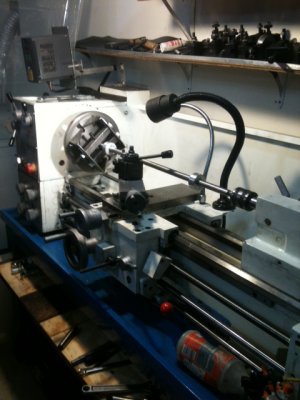- Joined
- Apr 30, 2012
- Messages
- 2,401
i'm not a machinist and have no training but i would think that for the tolerences that are being talked about here a live center is a needle in a hay stack and some adjustment of a tailstock is going to be required to acheive the tolerances being disgused anyway? a good machine has a heavy headstock with precision bearing then on the other end of the lathe there is the tail stock, much smaller at no where the precision of the headstock. the greater the distance from the head stock and pressure put on the cutter i cant see the precision of the live center being any more of a factor than bed rigidity and tailstock bore fit. am i missing something in my thinking. or wouldnt it be better to turn the part around in a 4jaw whenever possible and work at the headstock end and work towards the center for real precision at the levels you are talking about.
I have one indicator that reads in .0001 increments but i cant figure out how to use it and not breath on it at the same time:lmao:
steve
I have one indicator that reads in .0001 increments but i cant figure out how to use it and not breath on it at the same time:lmao:
steve
Last edited:


